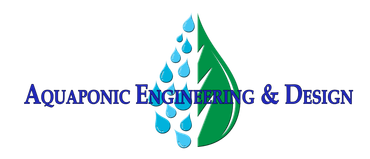Start Your Farming Legacy Today!
Turn-Key Systems | Custom Designs | Profitable Solutions
Turn-Key Systems Custom Designs
Profitable Solutions
Aquaponic Engineering & Design has produced and is currently supporting over 150,000 square feet of production. Join the AED family today!
Featured Video: Freeport High School
What is Aquaponics?
“Aquaponics is a sustainable agricultural system that combines aquaculture (fish farming) and hydroponics (soil-less plant cultivation). It is a closed-loop system where fish and plants coexist in a mutually beneficial relationship.
In an aquaponics setup, fish are raised in a tank or pond, and their waste, rich in nutrients, becomes the fertilizer for the plants. Fish waste contains ammonia, which is converted into nitrites and then nitrates by beneficial bacteria in a process called nitrification. These nitrates serve as nutrients for plants, providing them with essential elements for growth.
The plants, typically leafy greens, herbs, or vegetables are grown in containers or beds where their roots are submerged in nutrient-rich water. As the plants take up the nitrates for growth, they help purify the water by removing these nutrients, effectively filtering the water for the fish. The clean water is then returned to the fish tank, completing the cycle.
Aquaponics offers several advantages over traditional farming methods. It uses significantly less water than soil-based agriculture since water is recirculated within the system. The absence of soil eliminates the need for pesticides and reduces the risk of soil-borne diseases. Additionally, aquaponics allows for year-round cultivation and can be practiced in urban areas or regions with limited arable land.
By combining aquaculture and hydroponics, aquaponics provides a sustainable and efficient method of food production. It represents a symbiotic relationship between fish and plants, creating a self-contained ecosystem where both components benefit from each other's presence.”


Share On: